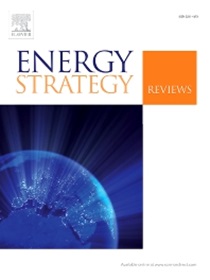灵活的核能和波动的可再生能源?-对脱碳多矢量能源系统的分析
IF 7.9
2区 工程技术
Q1 ENERGY & FUELS
引用次数: 0
摘要
许多政府考虑新建核电站以促进脱碳。一方面,可调度的核电站可以补充风能和光伏发电的波动。另一方面,不断上升的建设成本和时间引发了经济方面的担忧。本文研究了核电厂作为有效脱碳选择的经济阈值。在对建设成本和时间进行广泛审查的基础上,我们应用欧洲能源系统的详细模型来分析2040年核电在完全脱碳能源系统中的成本效益份额。我们的分析发现,即使逆转历史趋势,核电的一夜之间建设成本减半至每千瓦4000美元- 2018美元,建设时间保持在10年以下,核电在欧洲发电中的成本效益份额也只有10%左右。核电站必须以接近90%的容量系数灵活运行,才能收回投资成本,这意味着,即使在技术上可行,灵活运行在经济上也是不可行的。因此,电网基础设施、多能源系统的灵活需求和存储是整合波动的风能和光伏发电的更有效的选择。研究结果表明,在未来的电力系统中,不应该依赖核电的灵活性。本文章由计算机程序翻译,如有差异,请以英文原文为准。
Flexible nuclear power and fluctuating renewables? — An analysis for decarbonized multi-vector energy systems
Many governments consider new nuclear power plants to promote decarbonization. On the one hand, dispatchable nuclear plants can complement fluctuating generation from wind and PV. On the other hand, escalating construction costs and times raise economic concerns. This paper investigates the economic threshold at which nuclear plants are an efficient decarbonization option. Building on an extensive review of construction costs and times, we apply a detailed model of the European energy system to analyze the cost-efficient share of nuclear power in fully decarbonized energy systems in 2040. Our analysis finds that even if, reversing the historical trend, overnight construction costs of nuclear half to 4,000 US-$2018 per kW and construction times remain below ten years, the cost-efficient share of nuclear power in European electricity generation is only around 10%. Nuclear plants must operate inflexibly and at capacity factors close to 90% to recover their investment costs, implying that operational flexibility – even if technically possible – is not economically viable. As a result, grid infrastructure, flexible demand in multi-energy systems, and storage are more efficient options for integrating fluctuating wind and photovoltaic generation. The findings suggest that nuclear power should not be relied on for flexibility in future power systems.
求助全文
通过发布文献求助,成功后即可免费获取论文全文。
去求助
来源期刊

Energy Strategy Reviews
Energy-Energy (miscellaneous)
CiteScore
12.80
自引率
4.90%
发文量
167
审稿时长
40 weeks
期刊介绍:
Energy Strategy Reviews is a gold open access journal that provides authoritative content on strategic decision-making and vision-sharing related to society''s energy needs.
Energy Strategy Reviews publishes:
• Analyses
• Methodologies
• Case Studies
• Reviews
And by invitation:
• Report Reviews
• Viewpoints
 求助内容:
求助内容: 应助结果提醒方式:
应助结果提醒方式:


